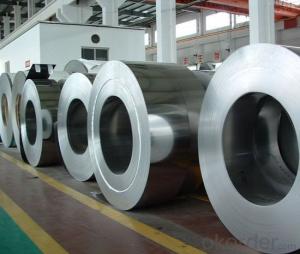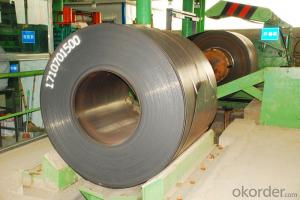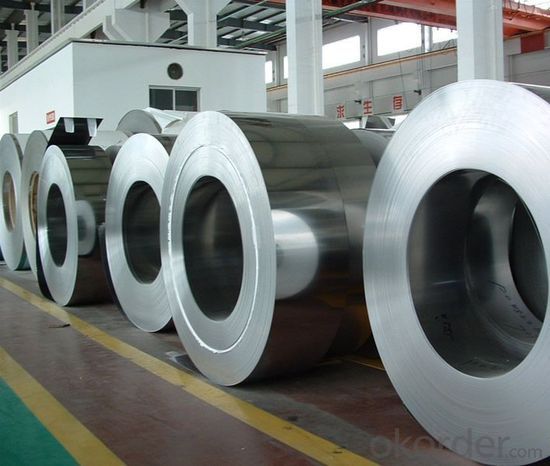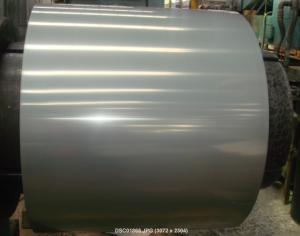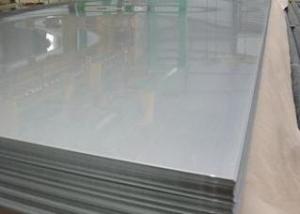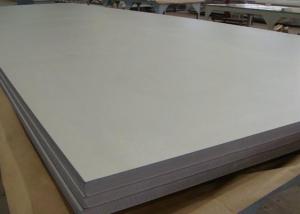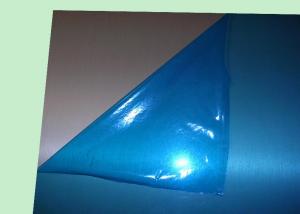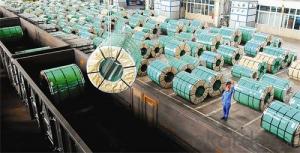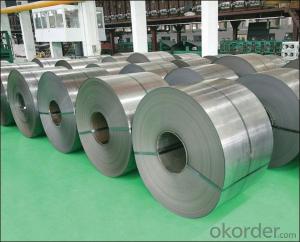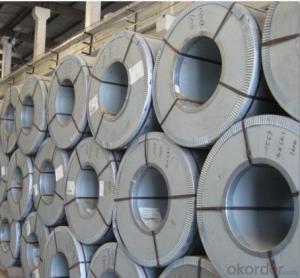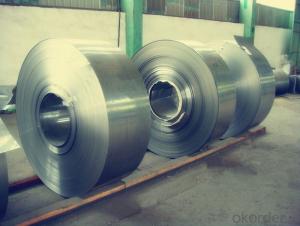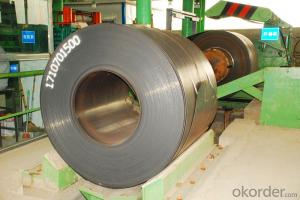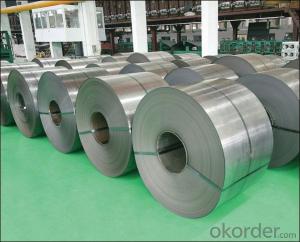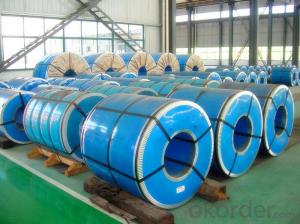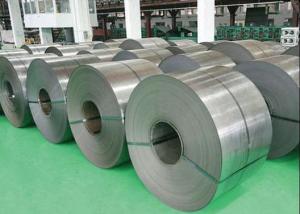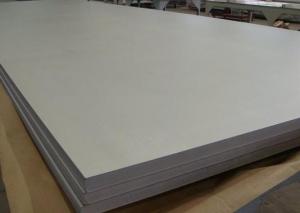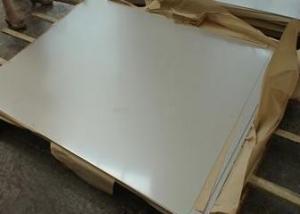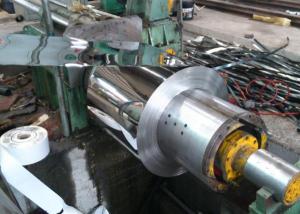Hot Rolled Stainless Steel Coil 201 Narrow Strip
OKorder Service Pledge
OKorder Financial Service
You Might Also Like
Hot Rolled Stainless Steel Coil 201 No.1 Finish Narrow Strip
Hot Rolled Stainless Steel 201 half copper Chemical Composition(%) | |||||||
C | Si | Mn | P | S | Ni | Cr | Cu |
0.1 | 0.5 | 10 | 0.04 | 0.01 | 1.20/1.30 | 13.00/14.00 | 0.8/1.0 |
Grade: | 200 Series | Standard: | JIS,AISI,ASTM,GB,DIN | Thickness: | 2.5/3.0/4.0mm |
Width: | 485/510/550/610/1010/1240mm | Place of Origin: | Shanghai China (Mainland) | Brand Name: | CNBM |
Model Number: | 201 | Technique: | Hot Rolled | Application: | Industrial tubes/kitchen/bath |
Certification: | ISO | THK: | 2.5/3.0/4.0mm | Face: | No.1 |
Usage: | tubes/kitchen/bath | Origin: | CHINA | ||
201 Hot Rolled Stainless Steel Coil Specifications
THK:2.3/2.5/3.0/4.0mm
Width:485/510/550mm
Face:No.1
201 Hot rolled stainless steel Coil Application
Stainless steel is a production which not easy rust,acid resistance and corrosion resistance,so it is widely
used in light industry,heavy industry,daily necessities and the decoration industry.201 hot rolled stainless steel coil, use to produce cold rolled stainless ste
-el coil and stainless steel tube, pipe.
201 Hot Rolled Stainless Steel Coil
Strength Of Extension:100,000 To 180,000 Psi;
Yield Strength:50,000 To 150,000 Psi
Elongation :55 To 60%;
Modulus Of Elasticity:29,000,000 Psi;
Density :.280lbs/Cubic Inch(7.93g/Cm3)
- Q: Are 111 stainless steel strips suitable for heat exchangers?
- Yes, 111 stainless steel strips are suitable for heat exchangers. Stainless steel is a popular material choice for heat exchangers due to its high corrosion resistance and excellent heat transfer properties. The grade 111 stainless steel is typically a ferritic stainless steel, which means it is magnetic and has a high chromium content. This composition provides good resistance to corrosion, making it suitable for various environments and fluids used in heat exchangers. Additionally, ferritic stainless steels have good thermal conductivity, which is essential for efficient heat transfer in heat exchanger applications. Therefore, 111 stainless steel strips can be a suitable choice for heat exchangers, depending on the specific requirements and conditions of the application.
- Q: Can 111 stainless steel strips be formed into wire for various applications?
- Yes, 111 stainless steel strips can be formed into wire for various applications. Stainless steel strips can undergo a process called wire drawing, where they are pulled through a series of dies to reduce their diameter and form them into wire. This wire can then be used for a wide range of applications such as electrical wiring, springs, cables, and more.
- Q: What are the environmental impacts of using 111 stainless steel strips?
- The environmental consequences of utilizing 111 stainless steel strips can vary depending on several factors. To start, the production of stainless steel necessitates a considerable amount of energy, primarily in the form of electricity. This energy is often derived from fossil fuels, which contribute to the emission of greenhouse gases and climate change. Moreover, the extraction of raw materials, such as iron ore and chromium, can result in adverse environmental effects, including the destruction of habitats and pollution of water sources. Furthermore, the manufacturing process of stainless steel involves the utilization of various chemicals and gives rise to waste products. These chemicals have the potential to contaminate water sources and pose a threat to ecosystems. If not properly managed, the disposal of waste materials like slag and dust can also contribute to pollution. The transportation of stainless steel strips can also have environmental implications, as it typically involves the burning of fossil fuels that emit greenhouse gases and contribute to air pollution. However, stainless steel is renowned for its durability and longevity, which can help minimize the need for frequent replacements. This can result in a reduced overall environmental impact compared to other materials that require more frequent replacements. It is crucial to note that the environmental impacts of using stainless steel strips can be mitigated through responsible sourcing, energy-efficient production processes, and waste management practices. Additionally, the recycling of stainless steel can significantly decrease the necessity for new production, conserving resources and mitigating environmental impacts. In conclusion, the utilization of 111 stainless steel strips can have significant environmental consequences, but these can be minimized through responsible and sustainable practices throughout the entire lifecycle of the product.
- Q: Can stainless steel strips be used for kitchen appliances?
- Yes, stainless steel strips can be used for kitchen appliances. Stainless steel is a popular choice for kitchen appliances due to its durability, corrosion resistance, and sleek appearance. It provides a hygienic surface that is easy to clean and maintain. Stainless steel strips can be used to cover and protect various parts of kitchen appliances such as refrigerator doors, dishwasher panels, oven fronts, and range hoods. Additionally, stainless steel strips can be customized in terms of thickness, width, and finish to meet specific design requirements. Overall, stainless steel strips are a versatile and practical option for enhancing the aesthetics and functionality of kitchen appliances.
- Q: Are stainless steel strips suitable for high-temperature exhaust systems?
- Stainless steel strips prove to be a fitting option for high-temperature exhaust systems. Boasting resistance to corrosion and heat, stainless steel remains strong and intact even when exposed to elevated temperatures. Its remarkable ability to resist oxidation makes it ideal for scenarios where exhaust gases reach heightened temperatures. Stainless steel strips exhibit the capacity to endure the extreme heat generated by exhaust systems, ensuring their longevity and dependability. Moreover, stainless steel's immunity to corrosion and rust enables it to withstand the harsh conditions and corrosive elements present in exhaust systems. In conclusion, stainless steel strips are a suitable choice for high-temperature exhaust systems due to their heat resistance, durability, and corrosion resistance properties.
- Q: Are stainless steel strips suitable for food processing applications?
- Stainless steel strips prove to be an excellent option for food processing purposes, given their high suitability. The food industry widely embraces stainless steel due to its exceptional resistance to corrosion, durability, and hygiene. It remains inert when in contact with food, ensuring that the taste and quality of processed food remain unaltered and uncontaminated. Additionally, stainless steel strips are effortless to clean, guaranteeing the required level of sanitation in food processing environments. Furthermore, stainless steel possesses remarkable strength, enabling it to endure extreme temperatures, thus rendering it perfect for cutting, slicing, and packaging procedures. In summary, stainless steel strips are a dependable and secure choice for food processing applications.
- Q: How are stainless steel strips made?
- Stainless steel strips are typically made through a process called cold rolling. This involves passing a large coil of stainless steel through a series of rollers that gradually reduce its thickness. The steel strip is then annealed, which involves heating it and slowly cooling it to enhance its strength and corrosion resistance. Finally, the strip is cut into desired lengths and finishes, ready to be used in various applications such as automotive, construction, or manufacturing industries.
- Q: Are 111 stainless steel strips suitable for high-temperature furnaces?
- High-temperature furnaces necessitate stainless steel grades with greater heat and corrosion resistance, such as 310, 316, or 330. In contrast, 111 stainless steel is a low alloy ferritic stainless steel that is not intended for high-temperature applications. Utilizing 111 stainless steel strips in high-temperature furnaces could result in material deformity, oxidation, and failure, posing potential safety risks and diminishing furnace performance.
- Q: What is the maximum thickness available for stainless steel strips?
- The maximum thickness of stainless steel strips can differ based on the particular grade of stainless steel and the manufacturing capabilities of the supplier. Nevertheless, stainless steel strips can generally be manufactured in thicknesses ranging from 0.1 millimeters to multiple millimeters. Certain suppliers may have the ability to offer even thicker strips upon request, but it is crucial to communicate with the supplier to ascertain the maximum thickness available for the specific grade and project requirements.
- Q: What are the common surface defects in stainless steel strips?
- Stainless steel strips may exhibit several surface defects, such as scratches, pits, and roughness. Scratches may arise from mishandling, transportation, or processing of the strips. Pits, on the other hand, manifest as tiny depressions or cavities caused by corrosion or impurities. Improper grinding, polishing, or finishing processes can lead to surface roughness. Additionally, stains, discoloration, or uneven coating may also be present as other possible defects. Thorough inspection of stainless steel strips is crucial to identify these imperfections, as they can significantly impact the material's appearance, performance, and durability.
Send your message to us
Hot Rolled Stainless Steel Coil 201 Narrow Strip
OKorder Service Pledge
OKorder Financial Service
Similar products
Hot products
Hot Searches
Related keywords
